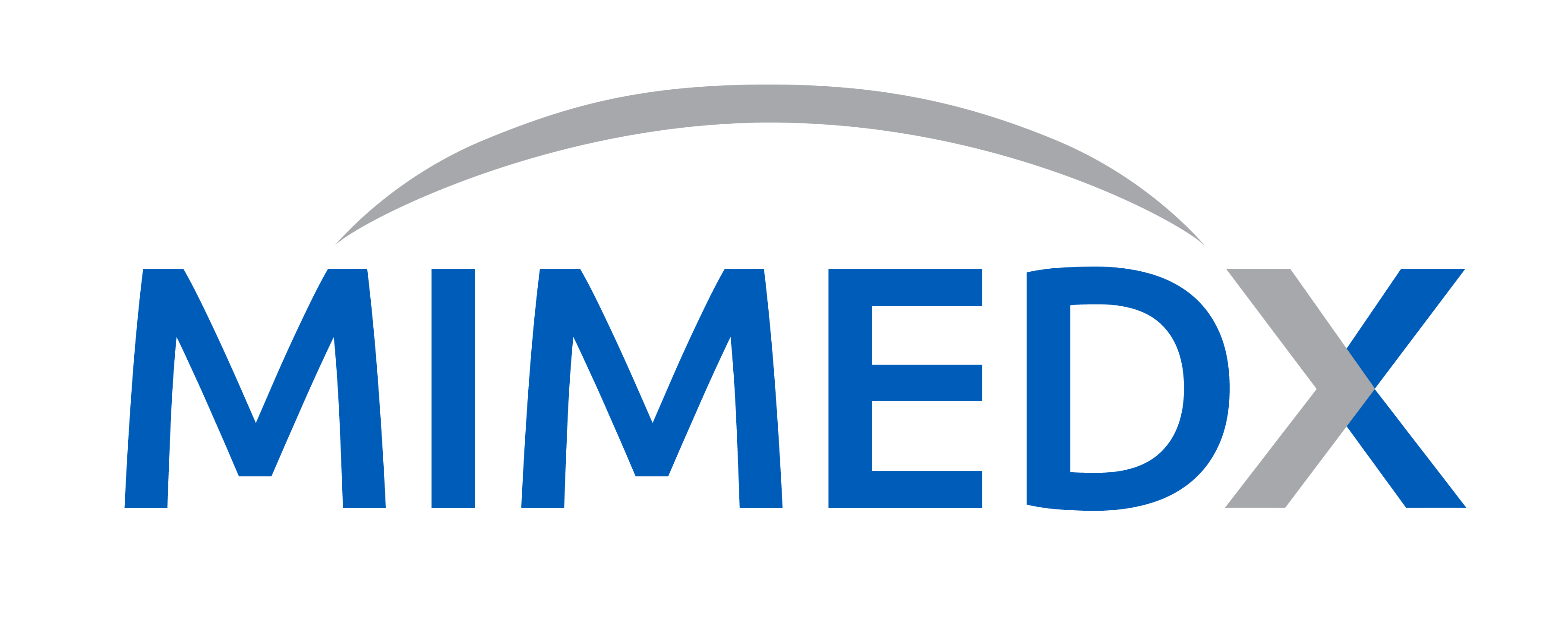Peer-Reviewed Study Demonstrates Increased Cost-Effectiveness of MIMEDX Dehydrated Human Amnion Chorion Membrane (DHACM) in Lower Extremity Diabetic Ulcer (LEDU) Treatment Compared to Standard of Care
Use of MIMEDX PURION® Processed DHACM Provided Improved Clinical Benefits, Shorter Average Length of Treatment and Increased Quality-Adjusted Life Years
MARIETTA, Ga., Feb. 16, 2022 (GLOBE NEWSWIRE) -- MiMedx Group, Inc. (Nasdaq: MDXG) (“MIMEDX” or the “Company”), a transformational placental biologics company, today announced the publication of a peer-reviewed study in the Journal of Wound Care evaluating the cost-effectiveness of the Company’s PURION® processed dehydrated human amnion/chorion membrane (DHACM) allografts (EPIFIX®) compared with standard of care for treating lower extremity diabetic ulcers (LEDUs), including diabetic foot ulcers (DFUs).
The study analyzed a retrospective cohort (2015-2019) of 10.9 million Medicare patients diagnosed with diabetes, 1.2 million of whom had a LEDU, and tracked outcomes such as amputations and healthcare utilization. Findings across propensity-matched cohorts demonstrated that the timely use of DHACM resulted in a significant reduction in long-term healthcare related costs, driven by the associated improved clinical benefits indicated by patients receiving DHACM, compared to those receiving standard of care, or receiving no advanced treatment (NAT).
“Patients with diabetes who suffer from DFUs face multiple morbidities and costs that significantly impact their quality of life, including the potential for both minor and major amputations. In addition to the detrimental patient impact, lower extremity diabetic ulcers present a growing challenge to the health care system,” said Dr. William Tettelbach, Principal Medical Officer of Medical Affairs, MIMEDX. “The data from this study exhibit clear improvements in outcomes and costs, and demonstrate the important benefits of DHACM to both patients and payers.”
The study’s findings showed that LEDU episodes treated with DHACM, following parameters for use (FPFU), led to statistically fewer amputations and health care utilization, such as emergency department visits, inpatient admissions and readmissions. In year one, the treatment saved $3,670 per patient and provided an additional 0.013 quality-adjusted life years (QALYs). At a willingness to pay (WTP) of $100,000 per QALY, the five-year net monetary benefit per patient was $5,003.
Timothy R. Wright, MIMEDX Chief Executive Officer, commented, “The results of this study have meaningful implications for patients suffering from lower extremity ulcers and for the physicians who treat them. DHACM has been shown to reduce the likelihood of amputations being required, lower healthcare costs, and provide patients, and their caregivers, with a better quality of life. MIMEDX is committed to establishing clinical, scientific and economic evidence in order to increase access to innovative technologies, improve patients’ lives and reduce the financial burden associated with treatment – these data are another important step forward in our effort.”
Diabetes is on the increase nationwide, estimated to affect more than 10% of the U.S. population and result in $327 billion in annual healthcare costs. DFUs are one of the major cost drivers. Medicare alone spends nearly $20 billion annually on the condition, and patients with a DFU face multiple challenges, including mobility limitations, risk of infection, amputation, diminished quality of life, and a shortened lifespan. Given an annual incidence of DFUs of 6% to 7% in the Medicare population, combined with a 4.1% incidence in the commercially insured population, a significant opportunity exists for improving outcomes and reducing costs. This study’s analysis calculated nearly $22 million in potential annual savings in a typical one-million-person plan.
In this study, LEDU episodes were categorized into four propensity-matched cohorts. Outcomes for DHACM and standard of care treatment were tracked from claims codes, analyzed and used to build a hybrid economic model, combining a one-year decision tree and a four-year Markov model. The budget impact was evaluated by the difference in per-member, per-month spending following completion of the decision tree. Cost-effectiveness was analyzed before and after the Markov model at a willingness to pay (WTP) threshold of $100,000 per QALY. The analysis was conducted from the healthcare sector perspective.
Prospective random controlled trials, meta-analyses and large retrospective studies have found that skin substitutes used as an adjunct to standard of care are more effective than standard of care alone in closing hard-to-heal LEDUs. PURION® Processed DHACM (EPIFIX®) is an innovative, advanced wound care treatment that presents a beneficial treatment pathway for patients and payers.
About MIMEDX
MIMEDX is a transformational placental biologics company, developing and distributing placental tissue allografts with patent-protected, proprietary processes for multiple sectors of healthcare. As a pioneer in placental tissue engineering, we have both a commercial business, focused on addressing the needs of patients with acute and chronic non-healing wounds, and a promising late-stage pipeline targeted at decreasing pain and improving function for patients with degenerative musculoskeletal conditions. We derive our products from human placental tissues and process these tissues using our proprietary methods, including the PURION® process. We employ Current Good Tissue Practices, Current Good Manufacturing Practices, and terminal sterilization to produce our allografts. MIMEDX has supplied over two million allografts, through both direct and consignment shipments. For additional information, please visit www.mimedx.com.
Contacts
Investors:
Jack Howarth
Investor Relations
404.360.5681
jhowarth@mimedx.com
Media:
Hilary Dixon
Corporate & Strategic Communications
404.323.4779
hdixon@mimedx.com

